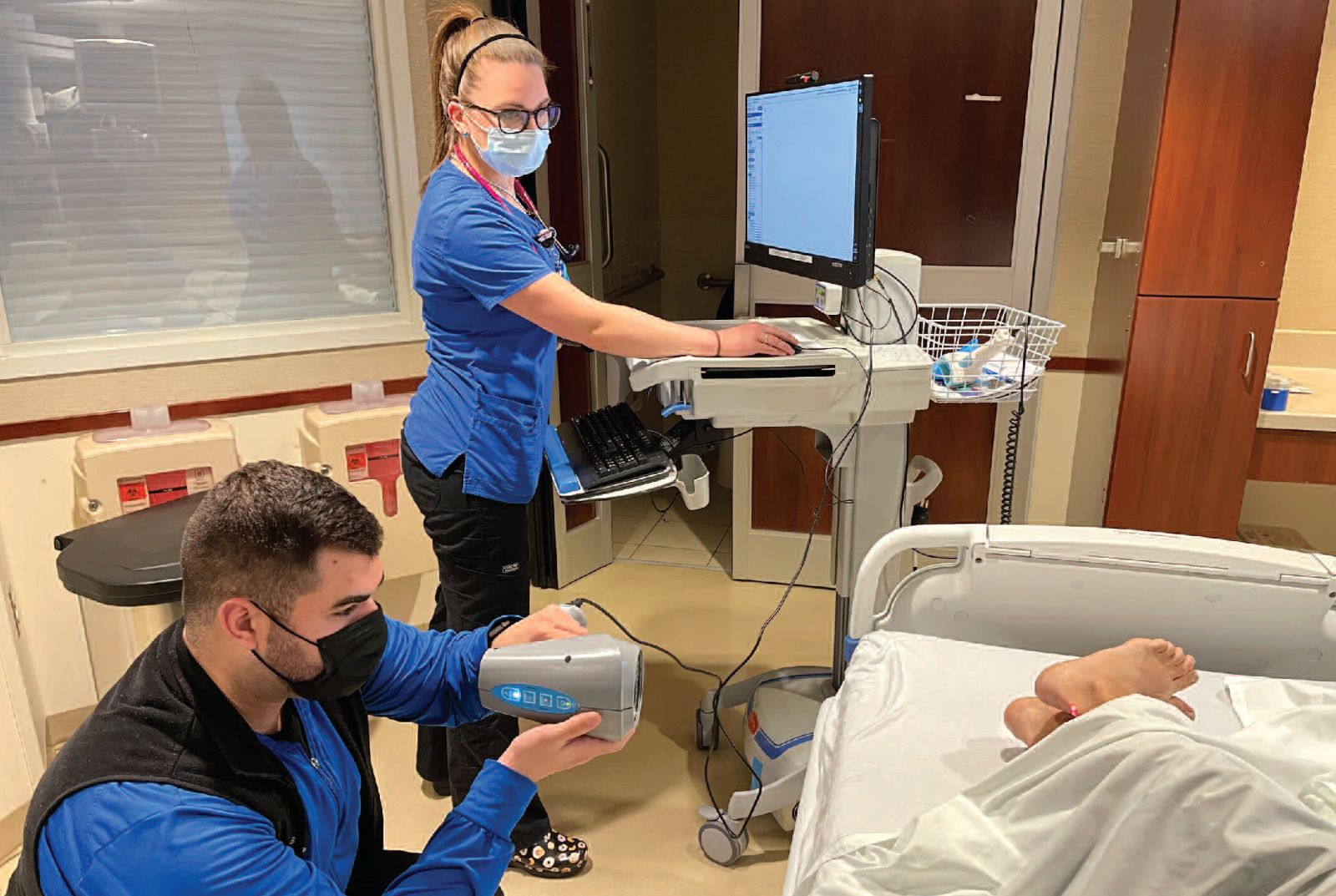<< Back
Thermal Scanners Help HHC Earn “A” Safety Ratings

February 05, 2024
The data wasn’t really making sense to Lisa Corbett, DNP.
Why were patients experiencing pressure ulcers within a week of admission? Corbett, system director of clinical wound care for Hartford HealthCare, knew from experience that these injuries, also called bed sores, present during longer patient stays.
“For 20 years, pressure injuries have been one of the highest-profile patient safety outcomes we measure,” she notes. “We have all kinds of best practices and precautions in place. We are hard-wired for those protocols in our nursing care.”
Her team dug deep into the information behind the numbers.
“The data showed that these patients were showing signs of pressure injuries very quickly after admission,” she says, adding the research caused them to believe many patients are ill and largely immobile at home for some time before coming to the hospital,
“The question became was (the injury) brewing under their skin all along or was it caused by our care?”
Corbett and a nursing team looked for technology to identify at-risk patients on admission. There were two options: one looking for edema (swelling) under the skin, and another scanning the skin to identify temperature differences beneath it.
The Hartford Hospital nursing group, known as the “Skin Champions” for their work to prevent pressure injuries, researched both technologies and decided to test thermal scanning. From there, they did a three-month trial in the ICUs at Hartford Hospital and the Hospital of Central Connecticut in 2021, using thermal scanning on each patient at admission.
The team found many patients with differing temperatures under their skin, a sign of impending pressure ulcers. By implementing care immediately, the number of pressure injury cases dropped. Using this information, Corbett says they developed a protocol, wrote a successful grant application and bought thermal scanners for all eight Hartford Hospital ICUs and trained colleagues.
The move, she adds, sparked more success in reducing pressure injuries and an expansion of the work to all Hartford Healthcare ICUs in June 2023. Thermal scanning of patient heels and buttocks – the areas most prone to pressure – is now part of the ICU admission process.
“These deep tissue skin injuries can occur up to seven days before it shows up visually,” Corbett says.
Since June 2023, there have been 33 “saves,” or patients showing thermal abnormalities on admission scans, which meant preventive strategies were implemented quickly. Each such injury has a $45,000 fine attached, so that the “saves” netted a $1.5-million savings.
Pressure ulcer reduction also helped all seven Hartford HealthCare hospitals earn “A” grades from The Leapfrog Group, the nation’s leading independent watchdog for quality and safety. Very few health systems in the nation have ever achieved straight As.
The Leapfrog Group noted that HHC’s efforts to reduce the instance included:
- Thermal scanning technology
- Standard protocols directing teams to assess skin condition at admission and periodically during hospital stays.
- Creation of a nursing council to teach clinical teams how to avoid pressure ulcers and help patients who develop them.
> Want more health news? Text StartHere to 85209 to sign up for text alerts